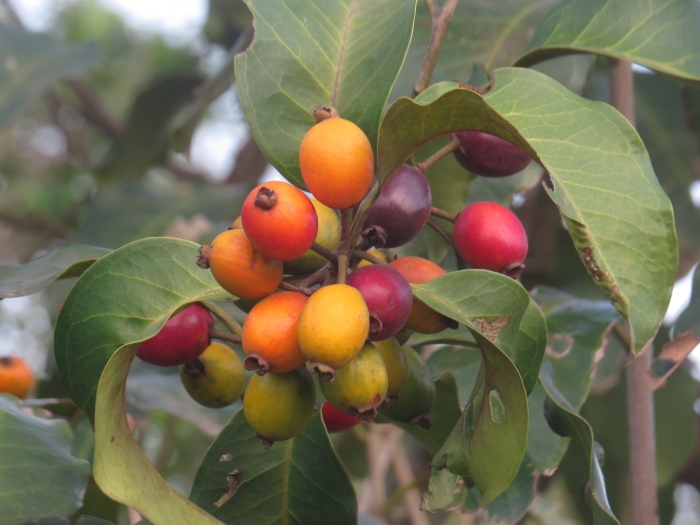Cherry-Of-The-Rio-Grande
(Eugenia cerasiflora)
Cherry-Of-The-Rio-Grande (Eugenia cerasiflora)
/
/

© Diogo Luiz
CC BY-SA 4.0
Image By:
© Diogo Luiz
Recorded By:
Copyright:
CC BY-SA 4.0
Copyright Notice:
Photo by: © Diogo Luiz | License Type: CC BY-SA 4.0 | License URL: http://creativecommons.org/licenses/by-sa/4.0/ | Uploader: diogoluiz | Publisher: iNaturalist |

Estimated Native Range
Summary
Eugenia cerasiflora, commonly known as Cherry-Of-The-Rio-Grande, is an evergreen shrub or small tree native to the Atlantic Forest ecoregion in Brazil. It is often cultivated in tropical and subtropical regions. This species grows at a moderate rate to a typical height of 10-20 feet (3-6 meters) and a width of 8-12 feet (2.4-3.7 meters). The plant features glossy, dark green leaves and white flowers that bloom in the spring, followed by edible, dark red to purple fruits resembling cherries, which are both ornamental and attract wildlife.
Cherry-Of-The-Rio-Grande is valued for its fruit production, ornamental appeal, and relatively easy maintenance. It is used in gardens for border planting, as a specimen tree, or for its edible fruits in home orchards. The plant thrives in full sun to part shade and prefers medium or fast-draining soils such as clay, loam, or sandy types. It requires medium amounts of water, but established plants are somewhat drought-tolerant. While generally disease-resistant, it can be susceptible to pests like aphids and scale insects. It is not known to be invasive outside its native range and can be pruned to maintain a desired shape or size.CC BY-SA 4.0
Cherry-Of-The-Rio-Grande is valued for its fruit production, ornamental appeal, and relatively easy maintenance. It is used in gardens for border planting, as a specimen tree, or for its edible fruits in home orchards. The plant thrives in full sun to part shade and prefers medium or fast-draining soils such as clay, loam, or sandy types. It requires medium amounts of water, but established plants are somewhat drought-tolerant. While generally disease-resistant, it can be susceptible to pests like aphids and scale insects. It is not known to be invasive outside its native range and can be pruned to maintain a desired shape or size.CC BY-SA 4.0
Plant Description
- Plant Type: Tree, Shrub
- Height: 10-20 feet
- Width: 8-12 feet
- Growth Rate: Moderate
- Flower Color: N/A
- Flowering Season: Spring
- Leaf Retention: Evergreen
Growth Requirements
- Sun: Full Sun, Part Shade
- Water: Medium
- Drainage: Medium, Fast
Common Uses
Bird Garden, Edible*Disclaimer: Easyscape's listed plant edibility is for informational use. Always verify the safety and proper identification of any plant before consumption., Low Maintenance, Potted Plant
Natural Habitat
Native to the Atlantic Forest ecoregion in Brazil
Other Names
Common Names: Rio Grande Cherry, Eugenia
Scientific Names: , Eugenia cerasiflora, Eugenia aggregata, Eugenia lucida, Luma lucidissima, Myrtus aggregata, Phyllocalyx cerasiflorus,
GBIF Accepted Name: